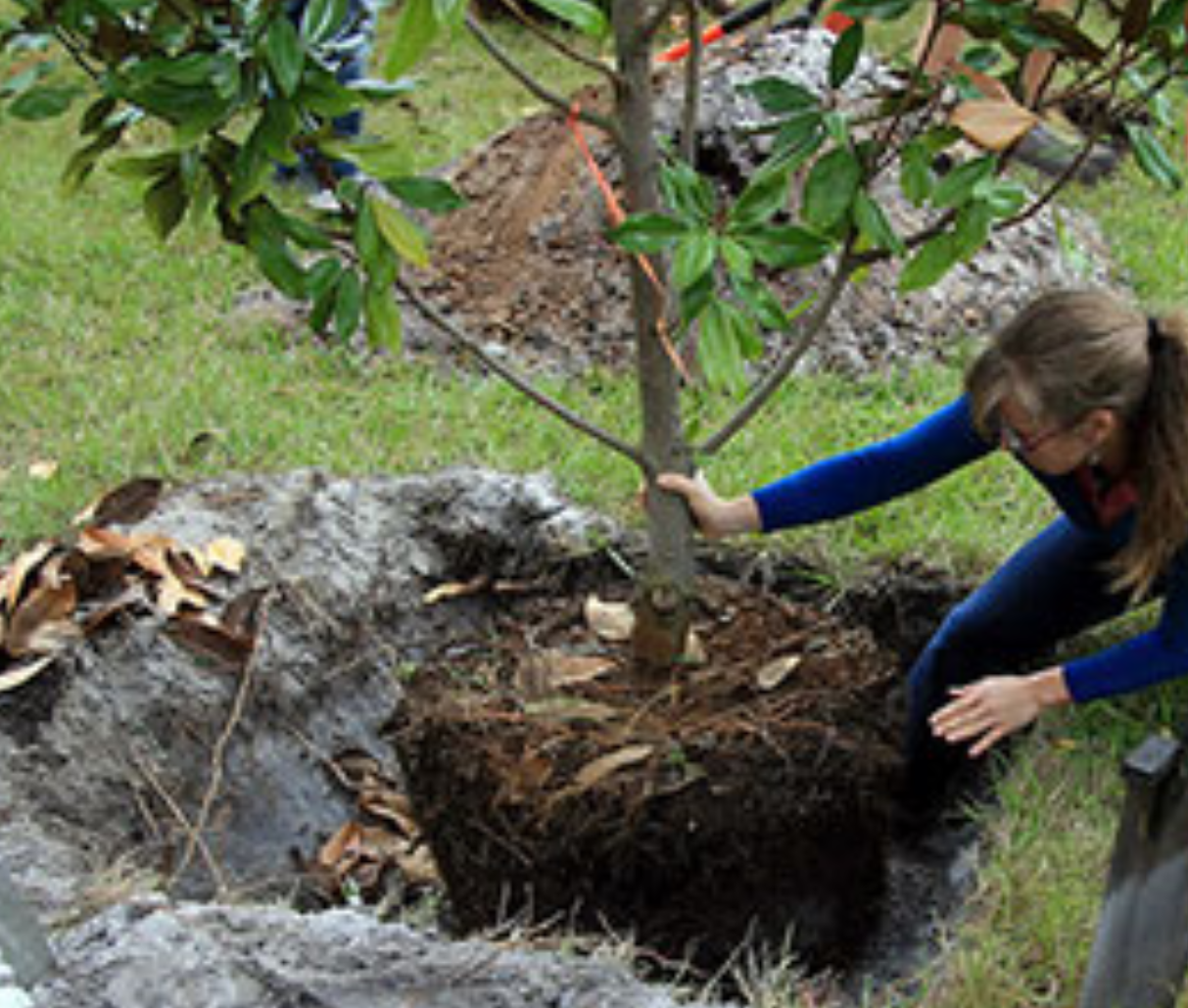
by Matt Lollar | Nov 13, 2024
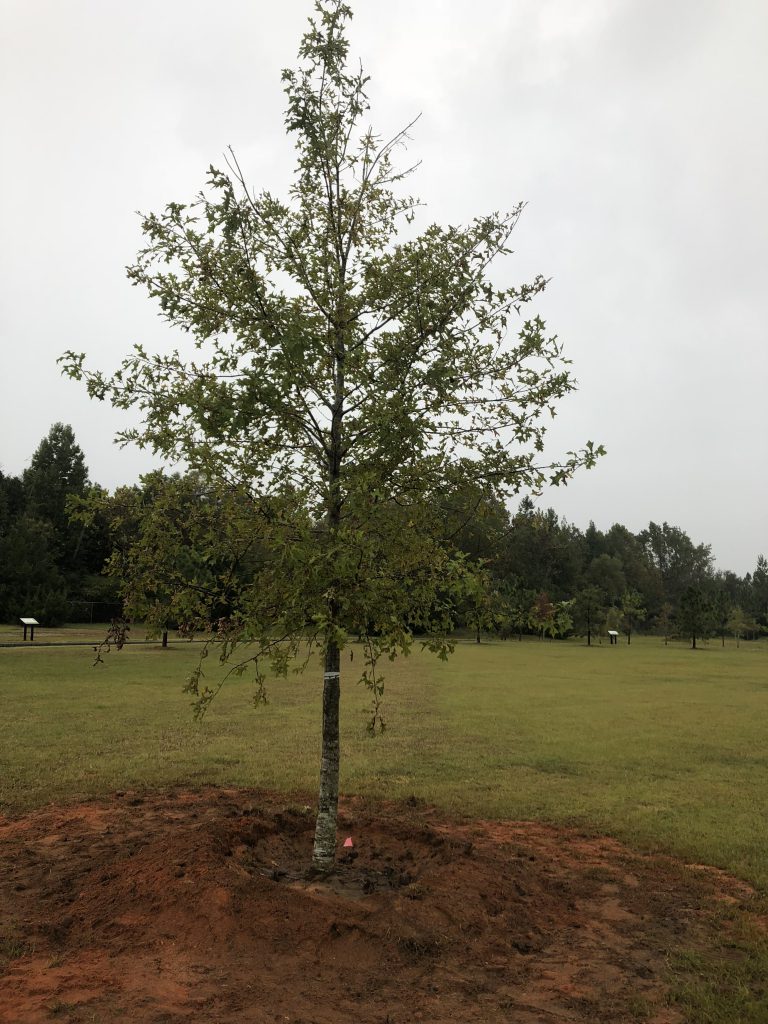
A planted tree with water retention berm. Photo Credit: Matt Lollar, University of Florida/IFAS Extension – Santa Rosa County
Extension agents are frequently tasked with evaluation of unhealthy plants in the landscape. They diagnose all sorts of plant problems including those caused by disease infection, insect infiltration, or improper culture.
When evaluating trees, one problem that often comes to the surface is improper tree installation. Although poorly installed trees may survive for 10 or 15 years after planting, they rarely thrive and often experience a slow death.
Fall is an excellent time to plant a tree in Florida. A couple of weeks ago beautiful Nuttall Oak was planted at Bagdad Mill Site Park in Santa Rosa County, FL. Here are 11 easy steps to follow for proper tree installation:
- Look around and up for wire, light poles, and buildings that may interfere with growth;
- Dig a shallow planting hole as wide as possible;
- Find the point where the top-most root emerges from the trunk;
- Slide the tree carefully into the planting hole;
- Position the point where the top-most root emerges from the trunk slightly above the landscape soil surface;
- Straighten the tree in the hole;
- Remove synthetic materials from around trunk and root ball;
- Slice a shovel down in to the back fill;
- Cover the exposed sides of the root ball with mulch and create water retention berm;
- Stake the tree if necessary;
- Come back to remove hardware after establishment.
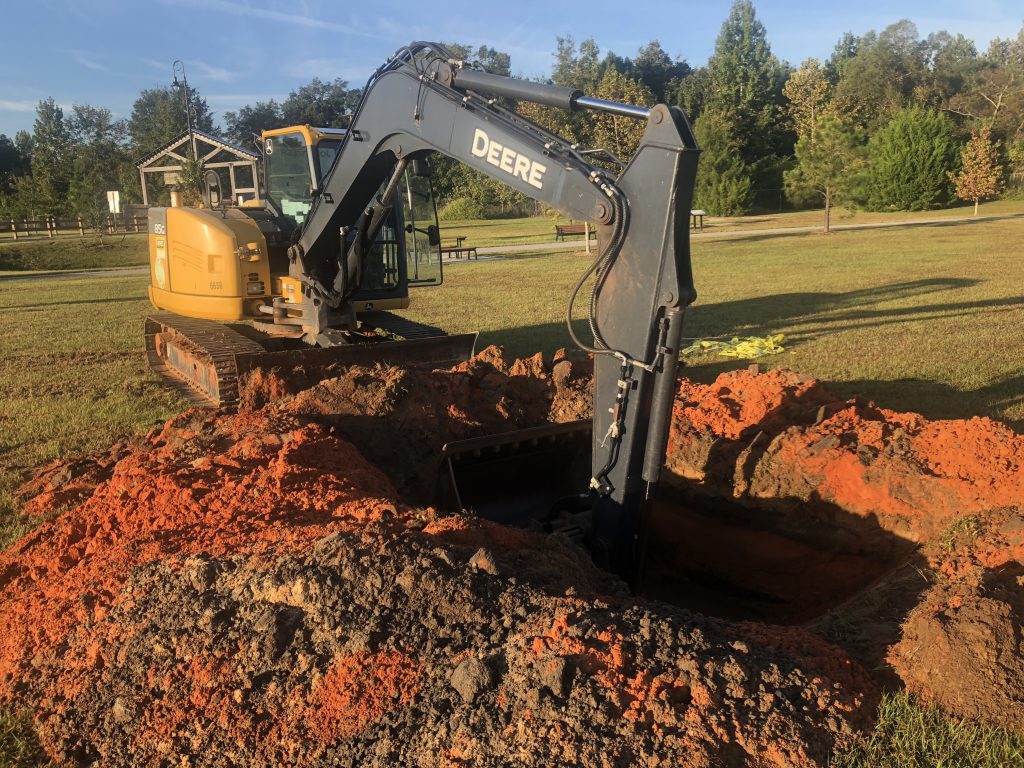
Digging a properly sized hole for planting a tree. Photo Credit: Matt Lollar, University of Florida/IFAS Extension – Santa Rosa County
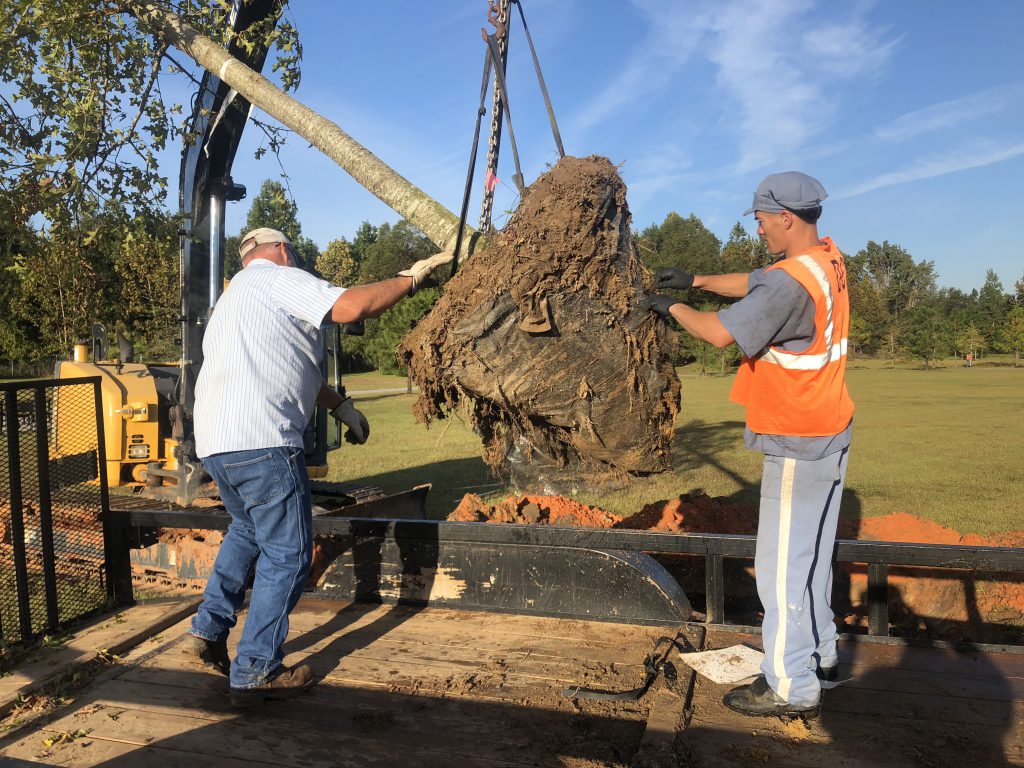
Removing synthetic material from the root ball. Photo Credit: Matt Lollar, University of Florida/IFAS Extension – Santa Rosa County
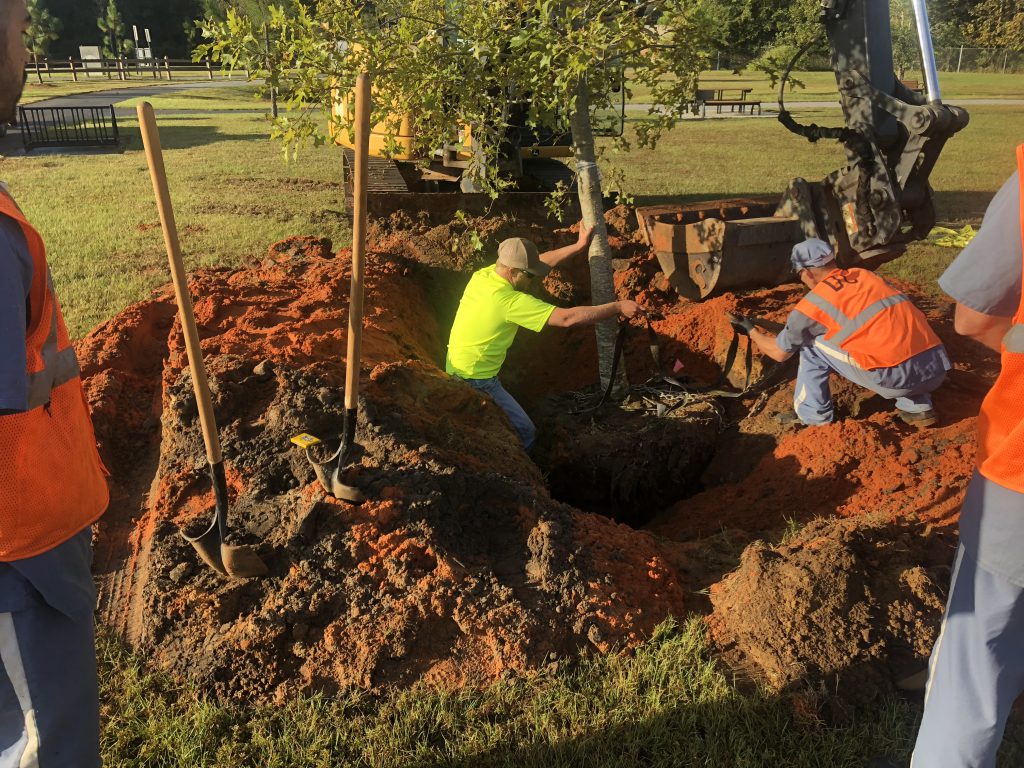
Straightening a tree and adjusting planting height. Photo Credit: Matt Lollar, University of Florida – Santa Rosa County
For more detailed information on planting trees and shrubs visit this UF/IFAS Website – “Steps to Planting a Tree”.
For more information Nuttall Oaks visit this University of Arkansas Website.
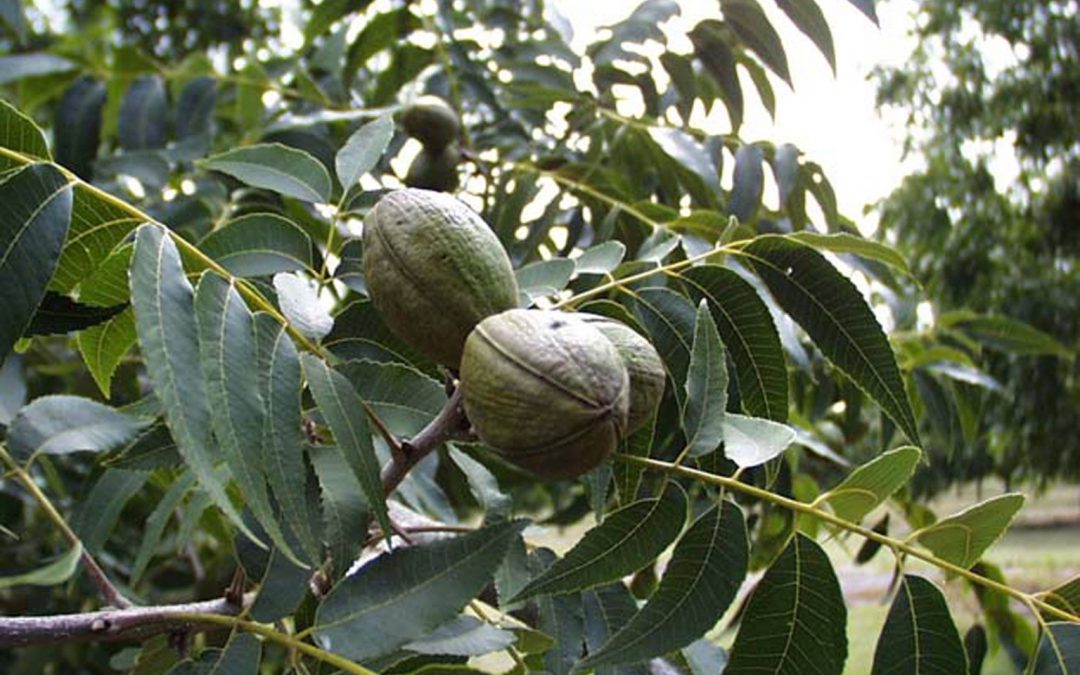
by Abbey Smith | Oct 24, 2024
Pecan trees are a southern staple in the states of Alabama, Georgia, and North Florida, prized for their delicious nuts and gorgeous additions they make to the landscape. During October and November, we start to see the mature pecan nuts fall to the ground and these can be dried and stored for many months, making them a long-lasting and rewarding crop. Here is what you need to know to install pecan trees of your own at home.

Pecan tree grove in North Florida. UF/IFAS Photo: Thomas Wright.
Choosing the Right Variety
Florida’s warm climate and extended growing season creates excellent conditions for pecan trees. But not all pecan tree varieties thrive in Florida’s climate. Because of the humid conditions that the state presents, some varieties are more susceptible to common diseases such as pecan scab. The recommended varieties for Florida include:
- ‘Elliot,’ ‘Excel,’ ‘Lakota,’ and ‘Sumner’ are typically the first varieties to be recommended because they have an excellent resistance to pecan scab.
- ‘Cape Fear,’ ‘Caddo,’ ‘Desirable,’ and ‘Kiowa’ are recommended on a case-by-case basis due to their high quality nut production but will require constant scouting due to their low disease resistance. These varieties are typically seen on a commercial production scale.
- The ‘Stuart’ pecan tree produces high quality pecans, but it can take up to 10 years to see any signs of production, so it is not commonly installed into the home landscape.
When planting your pecan trees, be sure to purchase trees from reputable and certified nurseries to ensure healthy, disease-resistant plants that produce high-quality nuts.
Planting and Soil Requirements
Pecan trees need well-drained soil with a pH of 6.0 – 6.5. If you are unsure of your soil’s pH, it is wise to take a soil sample prior to installing your trees. Contact your local UF/IFAS Extension office for more information. Here are a few things to consider when planting pecans:
- Site Requirement: It is important to remember that pecan trees require full sun and plenty of space to grow, as they can reach at least 70 feet in height with a wide canopy. They will need to be planted away from structures and power lines.
- Planting Depth: Pecan trees should be planted during the dormant season (November-February) and require a planting hole no bigger than 2 feet wide and 2 ½ feet deep to allow the taproot to extend directly into the ground.
- Tree Spacing: Older trees need to be spaced at least 60 to 80 feet apart. But younger trees or newly planted trees need to be spaced not as far as this. Pecan trees must cross-pollinate to produce nuts, so they must be close enough to share their pollen but far enough apart to not hinder the other trees’ root growth. Initial spacing can range from 30 to 40 feet apart.
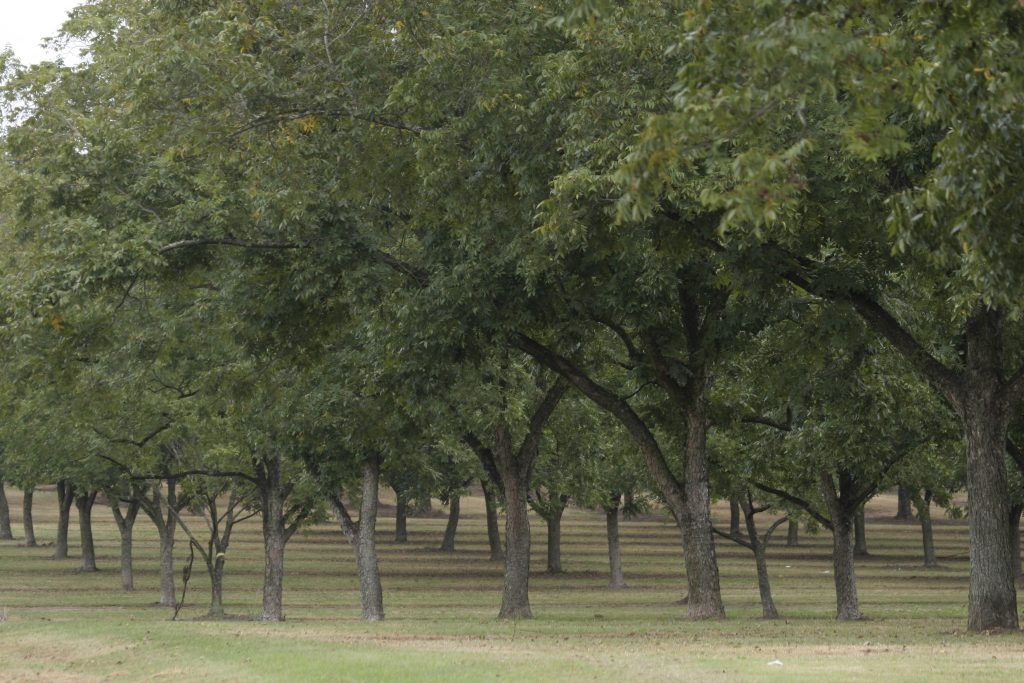
Pecan tree grove in North Florida. UF/IFAS Photo: Thomas Wright.
Fertilization and Watering
Young pecan trees need consistent watering after recently being transplanted to help establish their root system efficiently. Once established, pecan trees be relatively drought tolerant, but still benefit from deep watering during the dry periods. Irrigation is the most critical during the establishment of the first year. For the first 2 years of the tree’s life, they may require up to 10 gallons of water per day based on the current weather conditions. For fertilizer, apply 10-10-10 in early March through June. Fertilizer should be applied in a circle around the trunk of the tree. Avoid placing fertilizer directly against the trunk of the tree.
Growing pecan trees in Florida requires some planning and maintenance, but the rewards are well worth the effort. With the right variety selection, planting care, and attention to irrigation, you can have a bountiful harvest of homegrown pecans for your family to enjoy Whether you’re planting a single tree or a establishing a small orchard, pecan trees are a valuable and delicious to any Florida landscape. For more information, please visit:
https://edis.ifas.ufl.edu/publication/HS229
https://gardeningsolutions.ifas.ufl.edu/plants/trees-and-shrubs/trees/pecan/
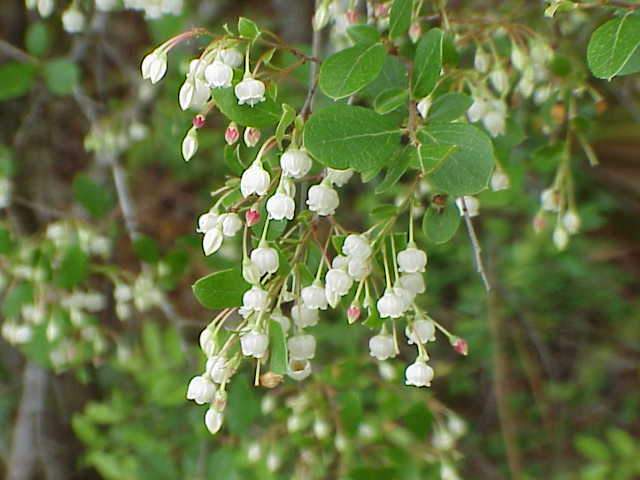
by Beth Bolles | Oct 17, 2024
UF IFAS Extension Escambia County was recently able to offer a native tree and shrub giveaway to our community. A county partner had some grant funding remaining and chose a nice selection of plants grown by a local native nursery. After seeing the plant selection, I was really excited that a few participating homeowners had the opportunity to take home one of my favorite native plants, the Sparkleberry, Vaccinium arboretum.
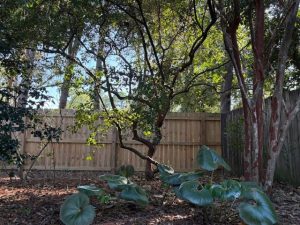
The Sparkleberry in the corner of my back yard. Photo by Beth Bolles, UF IFAS Extension Escambia County
Twenty-three years ago, I saved a sparkleberry on my new home lot because I loved this native tree. It has interest in all seasons in my opinion, including flowers, small fruit for wildlife, attractive bark, and an interesting shape as it matures. It has been a slower growing tree than others in my yard but I have enjoyed watching the tree develop its form and the bark develop the beautiful flaky cinnamon-brown look.
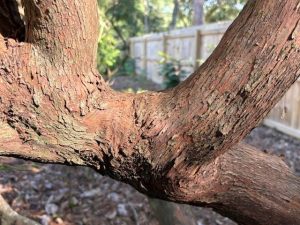
Sparkleberry bark and structure are attractive features in the landscape. Photo by Beth Bolles, UF IFAS Extension Escambia County.
The small tree is now about 12 feet tall and has never had any issues in the sandy, well drained soil. It can tolerate some moisture as long as the soil drains well. A grouping of trees from my neighbor’s lot keeps the plant in partial shade and we can often find sparkleberry specimens in the filtered light of woods. It can tolerate a sunnier location if that is the spot you have available for a small tree.
In addition to our enjoyment of this native tree, pollinators and other animals will appreciate the flower nectar, pollen, and berries. If you have a native nursery close to your home, be sure to ask for your own Sparkleberry if your site is suitable.
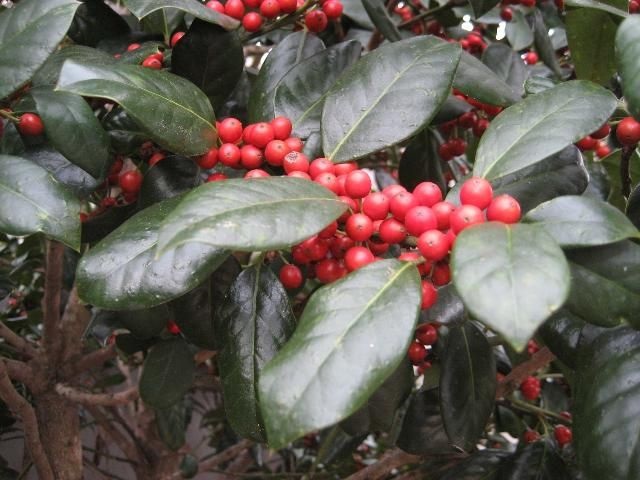
by Joshua Criss | Oct 4, 2024
Winter color is not always easy to find here in Florida. While staple annuals such as snapdragons (Antirrhinum majus) require planning and extra effort in the autumn. Instead, envision a perennial powerhouse that will not only provide colorful berries when the temperature drops but is a pollinator magnet in the spring. The Holly tree (Ilex spp.) perfectly embodies this vision. These low-maintenance evergreens, with their waxy leaves and colorful berries, are a sight to behold in your landscape, whether as a hedge or an accent plant.
Where and How to Plant
Hollies generally prefer partial shade and well-drained soils. However, exceptions exist, such as the Dahoon holly (Ilex cassine), adapted to wetter environments. Whatever cultivar you place in your landscape, following the planting and care instructions is crucial. Plant it in a hole approximately one foot wider than the root ball. Dig deep enough to cover most of the root ball but shallow enough so the uppermost root is slightly above the soil line. This may be counterintuitive, but roots need air to thrive, and shallow planting allows infiltration in the rhizosphere. To regulate soil temperature and soil moisture, add a 2-3 inch layer of mulch around the base of the plant. It is critical to leave some space between the tree trunk and mulch.
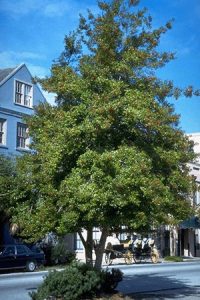
Photo: Edward Gilman, UF/IFAS.
Cultural Practices for Success
Irrigation is critical to establishing these plants, which should take between 3 and 6 months. Once established, cease irrigation except in drought conditions. Don’t apply too much water in either case, as hollies will suffer with wet feet. Fertilizers should be applied twice yearly in March and September. Have your soil tested before applying fertilizer to ensure a complete nutrient profile.
Pruning is not routinely required with holly trees. It is advisable to remove dead, diseased, and dysfunctional branches. Dysfunctional branches are those that grow back toward the main leader of the tree. These risk rubbing against one another, causing wounds that may become infiltration sites for pathogens. You should also remove sprouts coming from the root zone, commonly called suckers.
Potential Issues
Pests and pathogens are infrequent in hollies and are usually the product of improper growing practices. Occasionally, scale or spittlebug insects can infest the tree. Their presence will be punctuated by the appearance of blackened leaves, which is a symptom of sooty mold. Scouting these plants often will allow early detection and control of these pests. Some pathogens may also affect these trees. Most often, these are fungi caused by excessive moisture. Look for dieback or strange growth patterns in the plant’s foliage. When you see these, make sure the roots are not waterlogged.
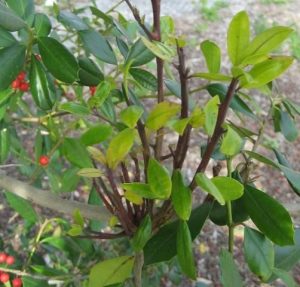
Photo: UF/IFAS
Summing Things Up
Hollies are an excellent and low maintenance addition to any landscape. Their berries and flowering patterns provide multiple seasons of interest and are a resource for birds and pollinators alike. For more information on Florida wildflowers, see these Ask IFAS documents, or contact your local extension agent for additional information on this and any topic regarding your gardens and more.
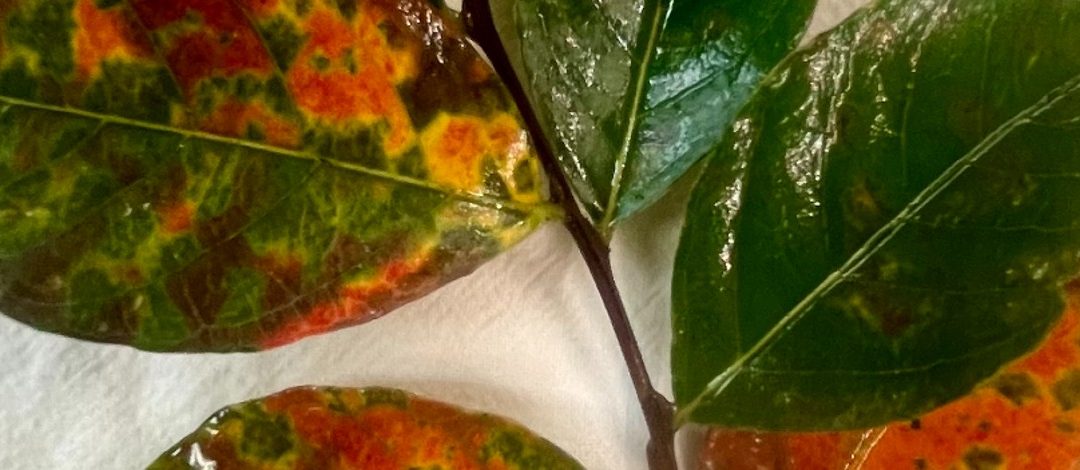
by Larry Williams | Sep 19, 2024
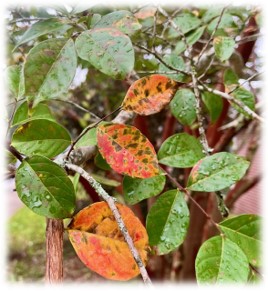
Normal fall leaves on deciduous crape myrtle. Credit: Larry Williams
Imagine you’re a leaf on a deciduous tree. In spring, you emerge and are blemish-free. You experience the first rays of light. You’ve never existed before. You begin to photosynthesize. This is what green leaves do. You’re normal.
The first windstorm occurs in April, blowing you into other leaves, branches and stems. You sustain a puncture wound. Trees don’t heal. So, any damage is permanent.
In May, a small population of aphids dine on the tree’s leaves. Ladybugs consume most of the aphids and a blowing rain dislodges the remaining few.
During the extended hot, dry weather of June and July, the tree’s owner is not watering properly and the tree begins dropping leaves. This is a normal process in many tree species during periods with insufficient moisture.
But you stay firmly attached.
The tree’s owner overdoes it in fertilizing his lawn and burns some of the tree’s leaves as a result. Most tree roots are shallow, having access to lawn fertilizer. Your leaf margin becomes brown and crisp as a result.
In August, you’re exposed to direct sunlight all day, partly because of the longer day length and partly because of the loss of other leaves that once shaded you.
In September, the tree’s owner applies weed and feed to his lawn. Tree roots growing in the lawn pull up some of the herbicide.
Tree roots grow two to three times beyond the branches, having access to herbicides applied to adjacent lawn areas. The herbicide injures many of the leaves, including you.
Shorter days and cooler temperatures of fall bring on changes in your physiology. The green pigment chlorophyll that has allowed you to produce sugars through photosynthesis since you first emerged is now breaking down.
As a result, your green color fades and fungal spots, sun scald and the puncture wound from spring become visible.
During October and November, many neighboring leaves turn loose and fall to the ground. This is part of the normal senescence process on deciduous trees.
Before you fall, the tree’s owner notices that you don’t look so good and becomes concerned about your brown spots instead of the uniform green color you had in spring. He has visions of another dead tree and rushes to his County Extension Office carrying you in hand.
A Master Gardener Volunteer explains to the tree’s owner that the spots are a natural part of the senescence process. The leaf is at the end of its life.
The tree’s owner is provided information on proper tree care.
The following spring, the tree produces new, healthy leaves, is provided better care and lives happily ever after!
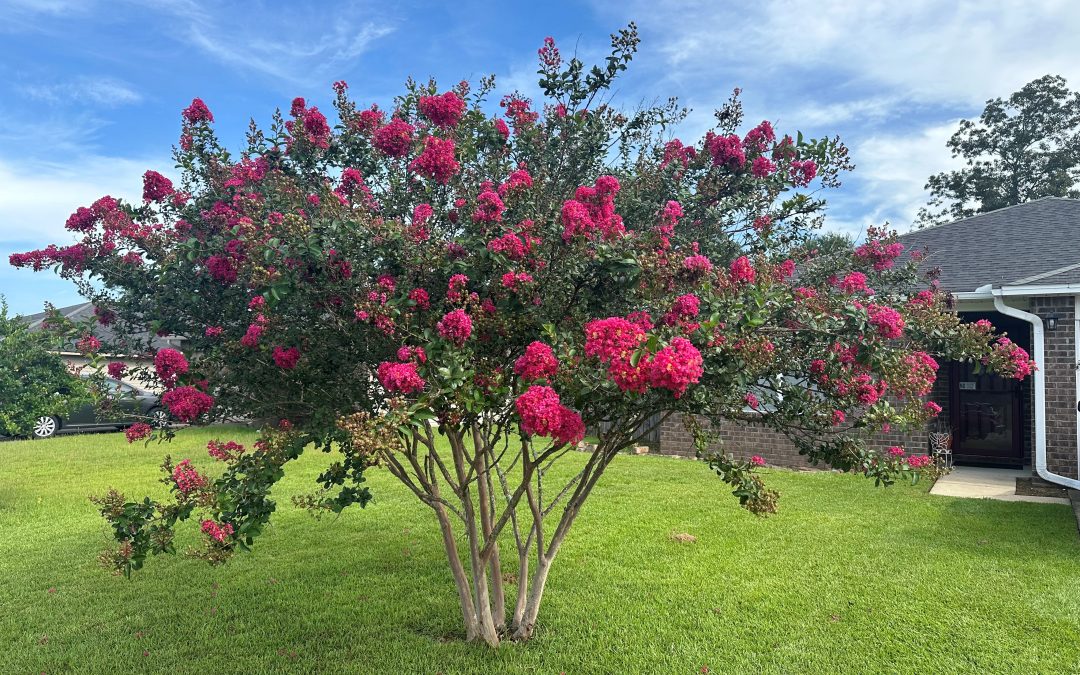
by Daniel J. Leonard | Aug 12, 2024
Despite being a near-perfect ornamental for the Panhandle, Crape Myrtle is often misused. Though there are dozens of commercially available varieties in all shapes and sizes, many people choose the wrong one for their yard. The most commonly sold cultivars ‘Natchez’ (white flowers), ‘Muskogee’ (pink flowers), and ‘Tuscarora’ (watermelon red flowers) – all three attain mature heights more than 20’ – are almost always too large for siting near a house or other structure and are often out of scale with landscapes. The simple solution to making the best use of Crape Myrtle in smaller yards (certainly not dramatic pruning – Crape Murder is among the worst landscape sins), is to select a smaller growing variety and ‘Tonto’ is a personal favorite in this category.
‘Tonto’ Crape Myrtle, one of the selections that emerged from Dr. Don Egolf’s Crape Myrtle breeding program at the U.S. National Arboretum over 50 years ago, is among my favorite Crape Myrtle varieties for several reasons. First, Tonto’s fuchsia hued flowers are as vibrant as flowers come; they practically glow in the landscape. The flower show lasts for several months and are a valuable food source for pollinators, bees in particular, in the late summer when few things are blooming. Tonto also is a relatively slow grower that only reaches about 10’ tall and wide at maturity. This allows the variety to be exceedingly versatile in landscapes as it can be used in the background of planting beds, as a specimen plant, limbed up as a small tree in open areas, or even placed in very large containers. Finally, beyond just the flower show and ideal size, ‘Tonto’ has uniquely attractive, cream colored, exfoliating bark and reliably attractive fall foliage. Both these features add interest to landscapes, even when ‘Tonto’ isn’t flowering.
Though ‘Tonto’ sports many unique qualities, it shares many other excellent traits and growing preferences with its Crape Myrtle kin. For best results growing any Crape Myrtle, trees should always be sited in full sun, at least 6-8 hours a day. Shading will result in greatly reduced flowering and lanky plants. Regular watering during the first year after planning while trees are becoming established is helpful, as is periodic fertilizer application. Once established, ‘Tonto’ and all other Crape Myrtles are exceedingly drought tolerant and can get by on their own with minimal inputs from gardeners.
If you’ve been struggling with a Crape Myrtle that has outgrown its site or thinking about planting a new Crape, I’d encourage you to give ‘Tonto’ a look. It’s an outstanding shrub/small tree, will reward you with flaming fuchsia flowers and smooth cream-colored bark each summer, and will never outgrow its space. Plant one today! For more information on growing Crape Myrtles or any other horticultural topic, contact us at the UF/IFAS Calhoun County Extension Office. Happy gardening.

















